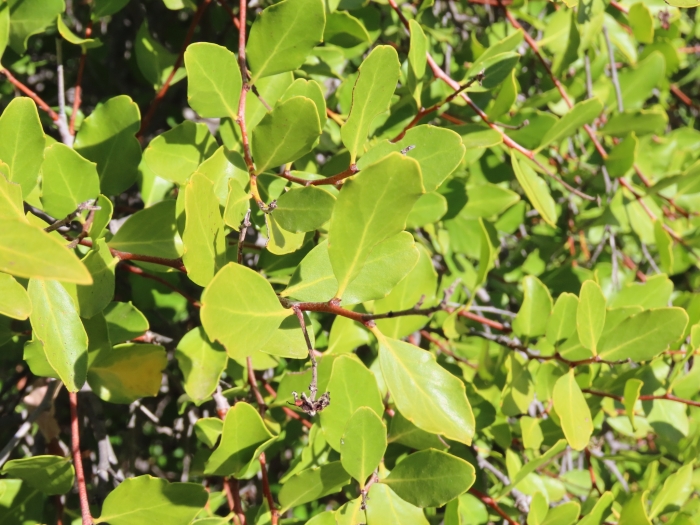Soapbark
(Quillaja saponaria)
Soapbark (Quillaja saponaria)
/
/

Nicolás Lavandero
CC BY 4.0
Image By:
Nicolás Lavandero
Recorded By:
Copyright:
CC BY 4.0
Copyright Notice:
Photo by: Nicolás Lavandero | License Type: CC BY 4.0 | License URL: http://creativecommons.org/licenses/by/4.0/ | Rights Holder: Nicolás Lavandero | Publisher: iNaturalist | Date Created: 2021-09-02T09:54:22-07:00 |











































Estimated Native Range
Summary
Quillaja saponaria, commonly known as Soapbark, is an evergreen tree native to the Mediterranean climate of central Chile, where it thrives in dry forests and the sclerophyllous scrub known as matorral. It typically grows to 15–20 meters (50–65 feet) in height and has a thick, dark gray bark that is rich in saponins. The leaves are small, leathery, and glossy green, providing year-round interest. Soapbark produces clusters of small, white flowers with yellow centers that bloom in the spring and summer, offering a modest display that attracts pollinators.
Soapbark is valued for its drought resistance and ability to withstand brief cold snaps down to about −12 °C (10 °F). It is often used in xeriscaping and as an ornamental tree in regions with a similar Mediterranean climate. The tree’s saponin-rich bark has historical use as a natural soap and is still used in various products. In cultivation, it prefers full sun exposure and can adapt to a range of soil types, provided they have good drainage. While generally low-maintenance, it may be susceptible to scale insects and fungal diseases in suboptimal conditions.CC BY-SA 4.0
Soapbark is valued for its drought resistance and ability to withstand brief cold snaps down to about −12 °C (10 °F). It is often used in xeriscaping and as an ornamental tree in regions with a similar Mediterranean climate. The tree’s saponin-rich bark has historical use as a natural soap and is still used in various products. In cultivation, it prefers full sun exposure and can adapt to a range of soil types, provided they have good drainage. While generally low-maintenance, it may be susceptible to scale insects and fungal diseases in suboptimal conditions.CC BY-SA 4.0
Plant Description
- Plant Type: Tree
- Height: 30-45 feet
- Width: 15-25 feet
- Growth Rate: Slow
- Flower Color: White
- Flowering Season: Spring, Summer
- Leaf Retention: Evergreen
Growth Requirements
- Sun: Full Sun
- Water: Medium
- Drainage: Medium, Fast
Common Uses
Bee Garden, Bird Garden, Butterfly Garden, Drought Tolerant, Low Maintenance, Showy Flowers
Natural Habitat
Native to the dry forests and sclerophyllous scrub of central Chile
Other Names
Common Names: Murillo’s-Bark, Soap Bark Tree, Quillaja, Soapbarktree, Soapbush, Soaptree, Chilenischer Seifenbaum, Quillay, Jabón De Palo, Kvillaja, Arbol De Jabón
Scientific Names: , Quillaja saponaria, Quillaja poeppigii, Quillaja smegmadermos, Leucoxyla saponaria, Quillaja molinae, Quillaja smegmadermis, Smegmadermos emarginata, Smegmaria emarginata,
GBIF Accepted Name: Quillaja saponaria Molina